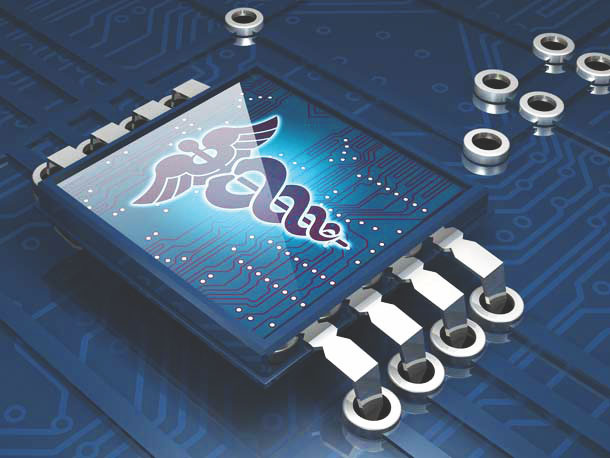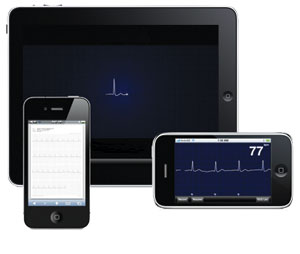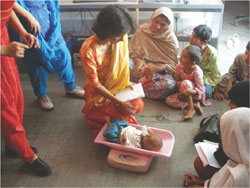
 A comfortable stay is what a patient demands from a hospital, while the infrastructure integrates the solutions to make it possible
A comfortable stay is what a patient demands from a hospital, while the infrastructure integrates the solutions to make it possible
By Shally Makin, shally@elets.in

The whole is often greater than the sum of its parts. This cant be true for healthcare. Dr Hemant Kumar, Director-Healthcare, Dell Services, feels that a large part of the problems in hospitals stems from the fact that there are too many parts”too many stakeholders working in silos. On the other hand he believes that these parts when stitched in an infrastructure with software, and services can then provide smart, integrated solutions that enhance the delivery of care.
Why do we feel homesick when we stay in hospital despite proper care? The answer lies in the environment where the body relax and rejuvenates. Infrastructure plays an important role in making the hospital stay comfortable for a patient and this generates a need to revamp the look, feel, processes and systems to deliver better healthcare facility to a patient for a happy stay. Hospital infrastructure in real terms is a venture that enables clinical staff to deliver care with a huge initial investment but leads to a long term gain. There are companies which take up such projects and plan with their deep applications, technology and industry knowledge to deliver largest and technologically efficient hospital. Companies like Wipro and HP have come forward with their cohesive set of technologies and services replacing single-function systems with a comprehensive solution that aligns technology with operational and patient priorities. The building systems needs to be service designed to build and maintain the information, communication and technology (ICT) systems for a digital hospital. The new technology automates clinical and facilities management workflows to improve care and efficiency and deliver better outcomes for patients.
A massive boom in private hospitals is changing Indias health delivery landscape beyond recognition. New hospitals are mushrooming, even in smaller towns, and leading healthcare entrepreneurs with deep pockets are expanding their empires, even overseas. The booming hospital service industry is projected to grow at 9 percent during 2010 “ 2015 along with the introduction of 20 health cities which are expected to come up in the next 5 years.


We need to build a future-ready infrastructure that supports tomorrows healthcare demands. The building blocks of this structure include intelligent infrastructure, simplified infrastructure management, streamlined application and workload management and smart data management
Dr Hemant Kumar
Director-Healthcare, Dell Services
The need to design a flexible infrastructure lies in the demand created by the masses for effective yet affordable healthcare. Targeting an annual growth rate of 10 percent, the Prime Minister called for a need to double the countrys infrastructure spending to US$ 1 trillion by the fiscal year 2016-17. A healthcare report mentions, hospital industry will account for more than 70 percent of healthcare sector revenues by 2012. The report shares the need to increase beds per population in India and the current figure of 9 beds per 10,000 people has to escalate to equalise to the world average of 40 beds per 10,000. India needs an investment of US$ 14.4 billion by 2025 to increase the bed density to 20 beds per 10,000 people. The emphasis on the participation of PPP to develop infrastructure and create super-specialty hospitals is important. The main objective of encouraging PPP initiatives is to provide low-cost, super-specialty care to families as well as maintain and upgrade total infrastructure to meet modernisation and expansion requirements.
A research shared by KPMG reported that per head spend on healthcare infrastructure during 2009-13 is projected to be over US$ 250 for Andaman and Nicobar and Manipur, while for states like Bihar, Uttar Pradesh, Chhattisgarh and Jharkhand it will be less than US$ 50.
FLEXIBLE INFRASTRUCTURE
Architecture is born out of operations and then theres a lot that goes into these processes including budget, timeline, relationships with prior designers, aesthetics, compliance issues, the personality of the community “ the list of considerations is almost endless while building a whole new healthcare arena. A hospital infrastructure designing requires arduous work and intelligence to drive effective implementation of solutions to build a comprehensive digital health IT. Introduction of customised solutions in creating an infrastructure for a hospital includes hospital planning, hospital project management, hospital architecture, market studies, feasibility studies, hospital space planning, biomedical equipment planning and other products for the furnishings of state of the art hospitals.

The hospitals of today need a modification to reassure safety and apt treatment of patients. Hospitals need to reinvent themselves to meet the challenges in the coming years. A typical future hospital is a place where patients safety is assured; quality of care is paramount and is highly efficient
Dinesh Bindiganavale
IEEE Member and independent healthcare consultant
|
Infrastructural Elements
|
 An effective enterprise service management maintains the production application environment and strong IT infrastructure. With the up-scaling patient numbers and cost of healthcare worldwide, there is a dire need for better care delivery. Companies aim to leverage technology across markets, improve operational efficiency and enable care coordination to digitise operations. Rashi Agarwal, Director, Praxis Health Consultancy, believes, Previous research has explored the relationships between quality of care, patient health and wellbeing, and the physical layout and environmental characteristics such as aesthetics, lighting, and thermal comfort. Its about taking a holistic approach to managing technology, and using it imaginatively to improve processes, enhance safety, improve quality of care and enable customised healthcare.
An effective enterprise service management maintains the production application environment and strong IT infrastructure. With the up-scaling patient numbers and cost of healthcare worldwide, there is a dire need for better care delivery. Companies aim to leverage technology across markets, improve operational efficiency and enable care coordination to digitise operations. Rashi Agarwal, Director, Praxis Health Consultancy, believes, Previous research has explored the relationships between quality of care, patient health and wellbeing, and the physical layout and environmental characteristics such as aesthetics, lighting, and thermal comfort. Its about taking a holistic approach to managing technology, and using it imaginatively to improve processes, enhance safety, improve quality of care and enable customised healthcare.
Today companies take up a whole new approach to develop and strengthen the hospital infrastructure as it provides the foundation to the concept of delivering effective healthcare. There are certain elements which interconnect the entire system integrate and provide solutions for entire healthcare infrastructure. Healthcare planning is the foremost  thing while designing an infrastructure to provide full spectrum of services from health service planning to architectural and interior design, equipment, and commissioning. A hospital needs to adapt best practices in healthcare design along with good wall protection material as a part of architectural products. These products include door and wall protection, expansion joint systems, privacy curtain tracks, and way-finding signage. OT also needs new technologies along with other medical systems displaying IP nurse calling, LED lighting, and patient bedside terminals to provide better patient care. Dinesh Bindiganavale adds, Hospitals can adopt some measures to ensure quality by improving indoor air quality with well-designed ventilation systems and air filters to prevent infection, provide better lighting and access to natural light to reduce stress and improve patient safety and create pleasant, comfortable, and informative environments to relieve stress and promote satisfaction among patients, their families, and staff.
thing while designing an infrastructure to provide full spectrum of services from health service planning to architectural and interior design, equipment, and commissioning. A hospital needs to adapt best practices in healthcare design along with good wall protection material as a part of architectural products. These products include door and wall protection, expansion joint systems, privacy curtain tracks, and way-finding signage. OT also needs new technologies along with other medical systems displaying IP nurse calling, LED lighting, and patient bedside terminals to provide better patient care. Dinesh Bindiganavale adds, Hospitals can adopt some measures to ensure quality by improving indoor air quality with well-designed ventilation systems and air filters to prevent infection, provide better lighting and access to natural light to reduce stress and improve patient safety and create pleasant, comfortable, and informative environments to relieve stress and promote satisfaction among patients, their families, and staff.

The healthcare sector while on a high growth trajectory, is also trying to deal with the challenge of pressure on margins and a huge shortage of quality human resources.
Charu Sehgal
Senior Director, Deloitte India
INTEGRATING TECHNOLOGY
Developing green hospital is again one of the most important elements to consider while designing the healthcare infrastructure. The hospitals should use disinfecting surface solutions covering the entire floor with a total spectrum air purification system to control climate and bacteria. A hospitals prime focus lies on the connectivity of the hospital and the networks seamlessly integrating the entire healthcare applications and services with the power of information technology. A hospital requires an expert in the design and installation of medical power systems in ICU and ICCUs, operating theatres, anesthetics rooms, and premature baby rooms including the range of resilient flooring and acoustical ceilings for hospital and healthcare sector.
The patient rooms are technologically oriented with the use of wireless technologies, temperature control and customised entertainment and educational systems along with patient lifts and bar coding of medication administration. The hospital infrastructure basically provides an overall physical design to improve patient safety and quality.
Analogous to buildings, a hospital infrastructure comprises of various academic institutions, laboratories, diagnostic centers, healthcare management and administration. TV Sivakumar identifies the need to design hospital infrastructure in India with a holistic approach. He says, The design for a right solution (be it infrastructure, technology, resources etc) must not be overlooked and must keep all stakeholders (management, employees and patients) and scalability in mind. Adoption of technology is inevitable and care must be taken to put it to best use. Continual Medical Education (CME) and technology training at all level is necessary to achieve constant growth in medical care.
The upcoming models of designing an operation theatre (OT) create another interesting concept”hybrid operating suite. It is the collaborative effort of architects, engineers, equipment planners, and consultants specialising in acoustics, vibration and audiovisual design and integration who all have worked together to develop a hybrid OT. Since it uses a highly integrated technology, a hospital should pre-design the space required to locate such an integrated amount of technology.
Healthcare infrastructure is at a booming stage in India as various companies are now investing to bring the latest technologies to the hospitals with a large scope of improvement. Diagnostics industry has contributed a lot to optimize hospitals and create a balance between management and offering services to the patient at an affordable price yet effective. A medical imaging department within a hospital is a stand-alone centre which can be treated as a separate business since it reaps big profits. With upgrading technology and current-generation equipments requires adequate radiation shielding and clean power. An imaging department should have large space, suits magnetic requirements, rooms which can control vibration and be soundproof, digital reading room mainly for MRI, PET scan, CT and X-ray rooms. Evidence based design provides a positive return on investment and even directly impact image quality which thus improves patient, family, and staff satisfaction.
While integrating a digital hospital, we need a solution which provides high availability by using virtualised, clustered and dual-redundant systems.
PATIENT SAFETY
Security is one of the most important elements to be included while designing the infrastructure for a hospital keeping patient safety as the most important factor. A modern hospital stores information in the form of bits and bytes as we rely on the vast network infrastructure to keep it safe. A patients information needs to be secured which further calls for an efficient network design to insure day to day operations. Security solutions consists of latest contact-less RFID technology to allow smooth and detailed control over all access points and detailed tracking of all staff and employees across the property: main entrances, lockers, department doors, storage rooms and any type of door with flexible solutions including wall remote controllers.
Medical furniture all together enhances the entire interiors of the hospital. The furniture ranges from fully motorised beds, ward furniture, patient transfer equipment, trolleys and other seating arrangement which accommodates even the caretakers of the patient. While planning a hospital, efficient planning and consulting, designing, manufacturing and support systems including track systems, numbering systems, curtains, nurse call systems play an important role in strengthening the network.
Charu Sehgal, Senior Director, Deloitte India believes, IT infrastructure strengthens the hospital management systems and to achieve consistently good health outcomes, it involves co ordination between all stakeholders along the healthcare continuum of preventive, diagnostic and curative care. These seemingly insurmountable challenges can be solved only through the innovative use of ICT to solve the problems of access, affordability and availability in the healthcare space.
A central database of digital dictation records eliminates loss of information, improves communication and sharing of knowledge across departments. Understanding cost estimations is a prerequisite when we start a project. While incorporating health facilities, uniqueness and accuracy is taken care of with the plan to last at least three decades before renovating or investing in creating new infrastructure. Over the years, there have been certain building equipments replaced and upgraded including controls/automation systems, fire alarm/protection systems and security systems.
 It is inevitable that in the near future holistic healthcare will have very specific implications for management of hospital operations and patient care on the whole.
It is inevitable that in the near future holistic healthcare will have very specific implications for management of hospital operations and patient care on the whole.
Rashi Agarwal
Director, Praxis Health Consultancy
MANAGING COSTS
An infrastructure for a hospital is designed to last for at least 30 years of its service towards providing care. There is a certain criterion to follow while we develop a building information modeling software. The most importantly is capital planning largely takes 60 percent stake and likewise project management which holds 40 percent. The infrastructure should be one which limits its focus on renovation and integration of expensive projects over the years. As we move forward towards globalisation local and national demographic changes with the changing epidemiological patterns are driven away by lifestyle changes. Unpredictable advances in the medical technology and escalating demands by the patients look forward to a good value for money hospital. It is difficult to equip the new facilities in existing building as it requires an upgraded cabling infrastructure able to support new, network-intensive systems. It also requires huge operational costs to develop new structured cabling solution and develop the Health IT infrastructure in the existing building. On the other hand, while planning a hospital the initial investment for incorporating IT into the hospital does not require a lot of amount. A flexible hospital infrastructure has an advantage to deal with the upgraded technology and systems to be incorporated in the existing systems without huge investments such as having proper shell space for medical equipments and suitable structural foundations of a building to allow additional floors to be added at a later time. Layouts for functional rooms, such as operating theatres, which would allow a change of usage in the future in response to changing technology, should also be designed in a flexible manner. It is also observed that with increasing costs of healthcare the hospitals require a cost effective model with a greener approach to lower energy costs.
percent stake and likewise project management which holds 40 percent. The infrastructure should be one which limits its focus on renovation and integration of expensive projects over the years. As we move forward towards globalisation local and national demographic changes with the changing epidemiological patterns are driven away by lifestyle changes. Unpredictable advances in the medical technology and escalating demands by the patients look forward to a good value for money hospital. It is difficult to equip the new facilities in existing building as it requires an upgraded cabling infrastructure able to support new, network-intensive systems. It also requires huge operational costs to develop new structured cabling solution and develop the Health IT infrastructure in the existing building. On the other hand, while planning a hospital the initial investment for incorporating IT into the hospital does not require a lot of amount. A flexible hospital infrastructure has an advantage to deal with the upgraded technology and systems to be incorporated in the existing systems without huge investments such as having proper shell space for medical equipments and suitable structural foundations of a building to allow additional floors to be added at a later time. Layouts for functional rooms, such as operating theatres, which would allow a change of usage in the future in response to changing technology, should also be designed in a flexible manner. It is also observed that with increasing costs of healthcare the hospitals require a cost effective model with a greener approach to lower energy costs.
| Common Planning Mistakes |
|
Building an infrastructure is a complex project to initiate especially in the rural set up that does not have enough resources to support. Even the minute details such as selecting an aesthetic color to paint on walls, creating space for toilets, lobbies with abundant daylight, efficient airflow, proper signboards and much more, forms an essential part of hospital infrastructure. An efficient master plan for designing a hospital infrastructure should have a holistic approach in adapting evidence-based design, family-centered care, point-of-care services, bedside charting and modularize myriad alternatives to suit the need of patients.
 In the ever growing and demanding field of healthcare, its very important to design, implement, refine and scale a Right Solution to achieve better healthcare at lower cost and efficient ways. Understanding success stories from other places, refining and putting it to best practice are the need of the hour for any healthcare organisation
In the ever growing and demanding field of healthcare, its very important to design, implement, refine and scale a Right Solution to achieve better healthcare at lower cost and efficient ways. Understanding success stories from other places, refining and putting it to best practice are the need of the hour for any healthcare organisation
T V Sivakumar
CEO, AmbalSoft InfoTech Pvt Ltd
A well structured hospital with new technologies streamlines patient data, improves reporting and management, assures a comfortable stay with effective treatment. It gropes the complex systems of hospital including operations, management, planning and design together to be termed as an infrastructure. The modern technological approach helps conceptualize healthcare facility projects to enable modularity and implementation. The major concern while constructing a hospital building should focus on planning and designing to meet proper health standards. Healthcare designs are always preferred if grounded to the real time experience of the patient and not totally on the architects perspective. To effectively implement the design concepts, it is to be planned and driven in the direction of research and explores opportunities to improvise at every step with upgrading technological innovations.
Be a part of Elets Collaborative Initiatives. Join Us for Upcoming Events and explore business opportunities. Like us on Facebook , connect with us on LinkedIn and follow us on Twitter , Instagram.












